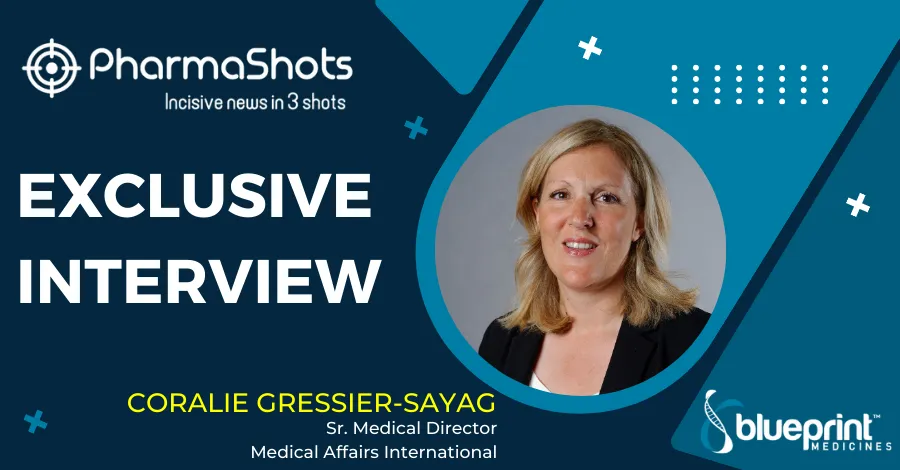
Exclusive Interview with PharmaShots: Jeremiah Robison of Cionic Share Insight on the New Data of Neural Sleeve for Neurological & other Disorders
In an interview with PharmaShots, Jeremiah Robison, Founder, and CEO at Cionic shared his views on the data of the Neural Sleeve gait study for patients with cerebral palsy, MS, stroke, and other neurological disorders
Shots:
- Cionic has reported the results from the Neural Sleeve gait study which was conducted in the San Francisco Bay Area. The study showed an avg. improvement of 143% to foot drop of Cionic’s Neural Sleeve in participants with mobility challenges
- Cionic’s Neural Sleeve is the first algorithm-powered bionic clothing & is designed to restore mobility and help patients with cerebral palsy, MS, stroke, and other neurological disorders
- The system reads the signal sent from the brain to the muscles by using advanced algorithms and can predict a person’s movement before foot lifts off the ground
Tuba: Thanks for taking out time, firstly we would like to talk about foot drop. What is it, its history and how is it used as a method of measurement in trial patients?
Jeremiah Robison: Foot drop is a symptom of a number of neurological conditions including stroke and MS. It is the inability to activate the dorsiflexors through the swing phase of gait. This can lead to gait instability, catching a toe, and falling. The standard of care for foot drop is an ankle-foot orthotic (AFO) which is a rigid, plastic, or carbon fiber brace which holds the foot in flexion. Cionic measures dorsiflexion during the swing phase and at heel strike compared to with an AFO or no support at all.
Tuba: What are the prevalence and incidence numbers for foot drop (US, EU, and globally)?
Jeremiah Robison: The Management of Adult Stroke Rehabilitation Care: A Clinical Practice Guideline indicates that for the 30 million global stroke survivors (7 million U.S.) 60% - 80% are estimated to live with some degree of motor impairment, with approximately 50% dependent on help for activities of daily living. Hemiparetic gait is the most common motor deficiency and results in decreased community participation and increased risk of falls.
The 2008 Impact of Walking Impairment in Multiple Sclerosis: Perspectives of Patients and Care Partners study by the National MS Society indicates that 40% of individuals with multiple sclerosis report difficulty walking, with 70% of those individuals saying it is the most challenging aspect of having MS.
And in a large European study, 30% of all individuals over the age of 60 present with gait impairment. This study further reported a high association between neurological gait disorders and depressed mood, cognitive dysfunction, and compromised quality of life.
Tuba: What neurological disorders are associated with foot drop/gait impairment?
Jeremiah Robison: We already discussed stroke (the single largest impacted population), MS and Cerebral Palsy, and then the long tail of neurological impairments, including spinal cord injury and knee arthroplasty. Some Parkinson’s patients also experience foot drop, but more commonly experience shuffling and freezing of gait.
Tuba: Tell us what Cionic's Neural Sleeve is and how it works to improve all of this?
Jeremiah Robison: Cionic’s Neural Sleeve is an algorithmically powered neuromuscular stimulator that activates the four major muscle groups of the leg in the proper sequence during gait. The sleeve looks a lot like what you see a basketball player wearing on their leg during games, but inside we have packed an array of electrodes and a powerful computer that can read the signals being sent from the brain to the muscles and also contract the muscles directly through electrical stimulation. In essence, our sleeve fills in the gaps in muscle firing that result from neurological injury and disease.
Tuba: Can we also talk about the trial design in which Cionic Neural Sleeves were tested?
Jeremiah Robison: The primary endpoints of our initial trials are dorsiflexion at heel strike, foot floor angle at heel strike, and heel-toe contact time. These measures are critical to fall avoidance in patients with foot drop. The format of back-to-back collections serves to eliminate any bias that may occur from fatigue. We are running these trials at two sites, our office in San Francisco, and at Cleveland State University, and we have participants across stroke, multiple sclerosis, spinal cord injury, and cerebral palsy.
Tuba: Kindly share any detailed results from the study so far with our readers?
Jeremiah Robison: We’re really excited about the results we’ve seen so far. In our San Francisco- and Cleveland-based trials, we’ve seen statistically significant improvement across all of our primary endpoints. Dorsiflexion at heel strike, which is the most direct measure of how well stimulation of the dorsiflexors is performing, has shown 143% improvement. We are now moving into more advanced stimulation interventions, measuring our ability to control foot inversion and provide propulsion through stimulation of the plantarflexors. When we complete our current 50-person trial, we intend to publish detailed findings.
Tuba: When do you plan to apply with the FDA for approval and when can it be available for patients? (we can totally share officially that you've submitted. perfect way to do so)
Jeremiah Robison: We submitted the Cionic Neural Sleeve to the FDA in November and our application is currently under review. We will be better able to provide availability timing once we’ve completed the FDA process.
Tuba: Are you planning for any collaboration to commercialize this device?
Jeremiah Robison: Currently, our plan is to commercialize this ourselves. The experience the user has with the Neural Sleeve is key; how it integrates with their current therapy plan, what exercises are relevant, and how they progress over time. There is so much more than just a device.
Tuba: Based on the performance and results is Cionic open to collaboration with payers for a Pay-for-Performance deal or more?
Jeremiah Robison: Yes. We know how important affordability and access are to our community. As parents of a child with a mobility difference, we have paid for so much out of pocket, and oftentimes this is upfront costs with no try-before-you-buy and no reimbursement. This doesn't seem right. We strongly believe that our system should only be paid for if it benefits the user, and I am encouraged that payers are moving towards pay for performance.
Tuba: What are the other possible applications of Neural Sleeves? Is Cionic assessing Neural Sleeves for the rectification of movement disorders of other body parts such as arms or hands?
Jeremiah Robison: We’ve designed the Neural Sleeve as a platform from the ground up with the full intention of taking on a wide diversity of mobility impairments. We know that the full challenge of mobility disorders is so much bigger than anyone company can take on. Whether it is expanding our gait solution to new populations, taking on upper extremity impairments like contractures, or developing new integrated therapeutics, the power comes in enabling innovations in the community. Our wearable form factor, read/write neural interface, and machine learning engine provides the flexibility to take on some of these indications ourselves, collaborate with industry experts on others, and ultimately to enable new applications to be delivered to patients at software speeds and software costs.
About Author: Jeremiah Robison is the Founder and CEO of Cionic. Robison is steadfastly working to develop the lower leg Neural Sleeve, via software development, product design, and individual trials. He is a proponent and an advocate for creating better solutions for people with mobility issues caused by neurological conditions and illnesses such as cerebral palsy, multiple sclerosis, stroke, and more. Jeremiah earned a master’s degree in computer science from Stanford University

This content piece was prepared by our former Senior Editor. She had expertise in life science research and was an avid reader. For any query reach out to us at connect@pharmashots.com













